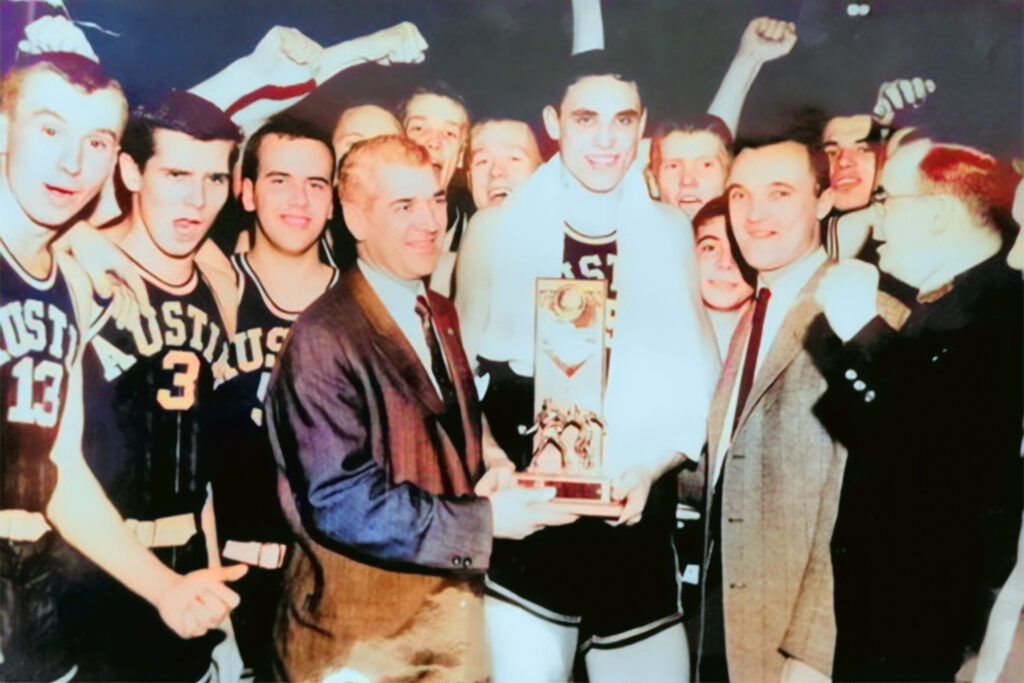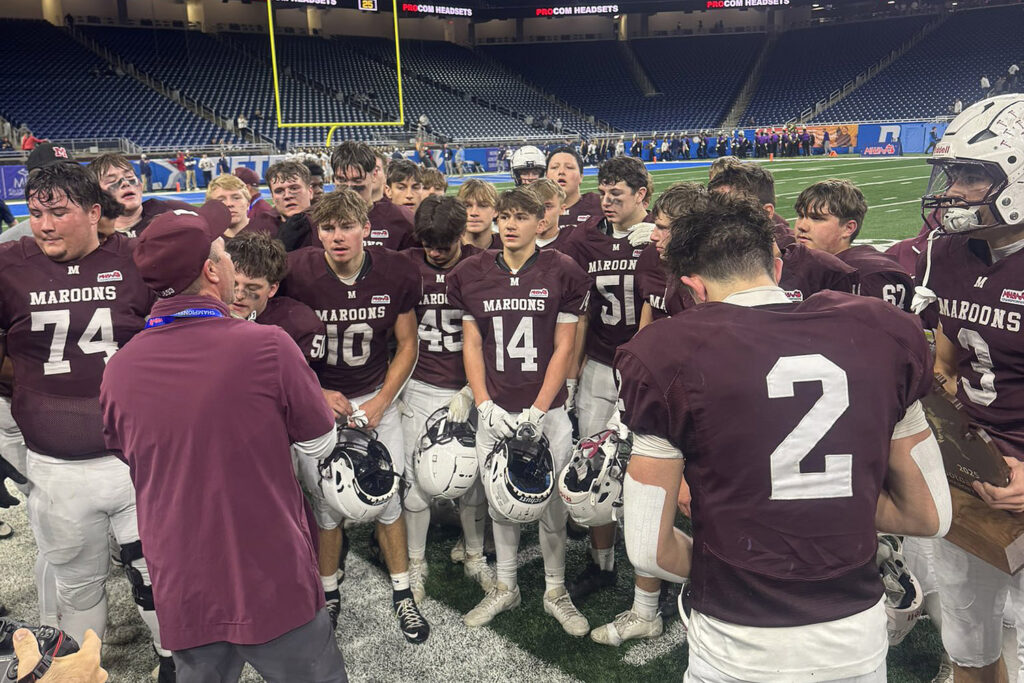Clare County — This area south of Roscommon State Forest was once full of fertile parcels of rich soil. The available land posted in the papers brought in plenty of settlers ready to establish themselves.
Among those were a large Swiss-American family with a young son, John L. Meyers, known later as Spikehorn. Other monikers included: wild man, inventor, naturalist, and storyteller. Born just after the end of the Civil War, Spikehorn would become a relic in his own right.
From serving legal papers personally to the first parks system director, P.J. Hoffmaster, bringing five fully grown bears into a Detroit news studio, and getting the daylight beat out of him by his female employee, Spikehorn had some real stories to tell.
But people really came for the classic yarns he spun—and to feed the bears, of course.
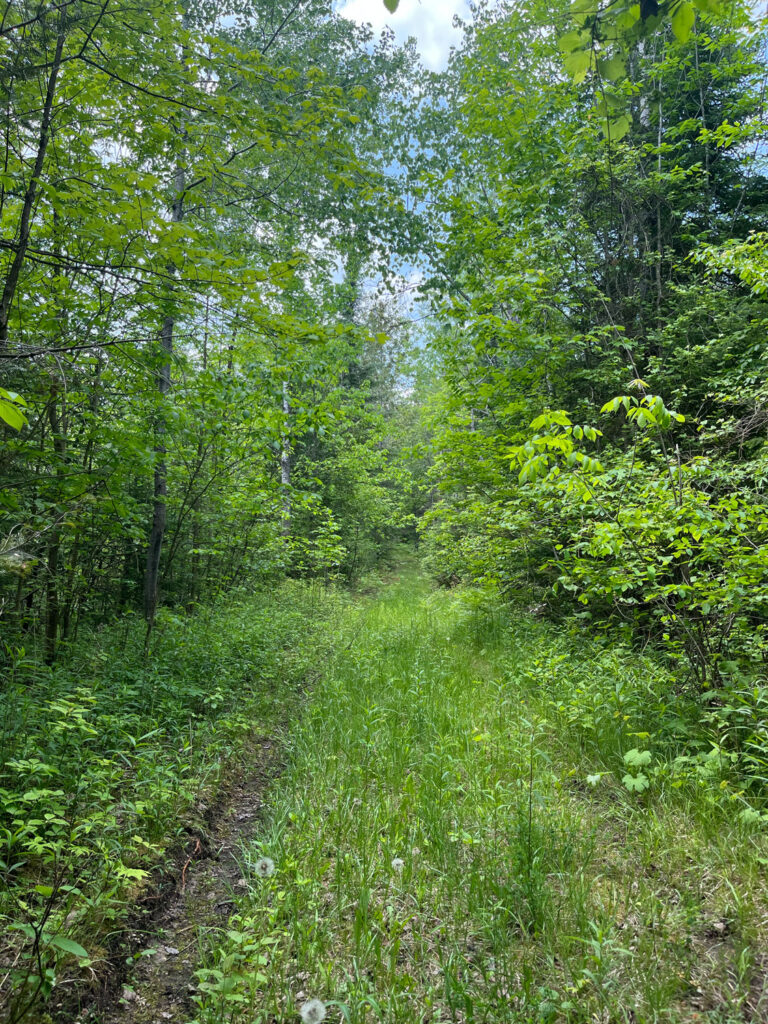
It all began when John’s father purchased a 160-acre parcel just south of Shepherd in 1876. They cleared trees for years through periods of burning selling the ash as fertilizer to the local ashery.
The Meyers built the road around their property, using a neighbor’s pair of oxen to grade it down. The main source of income was breeding livestock. John wasn’t keen on it. He preferred keeping up with the new contraptions being birthed during the industrial revolution.
To break up the mundane of rural life, young John built an attachable flying apparatus and attempted flight. He mowed himself a runway in the field and jumped off the top of the family barn, spraining both his ankles.
His next invention was a tractor, dubbed the Chippewa Chief. It was patented and mentioned in the local papers. Next came the dynamite gun, which was not entirely new but definitely new in mid-Michigan.
John also drew up and pitched a monument for the state’s capital, which he called the Liberty Tree: a hollow steel 200-foot-high tree with real trees growing throughout to honor the Americans lost in World War I. He most famously boasted of having come up with the plans for the tunnel between Detroit and Windsor.
Next, John wanted to run a mine and contacted a mine owner for a foreman job. He ran the “Rate Hole,” a 20-foot-deep mine with four-foot-high ceilings.
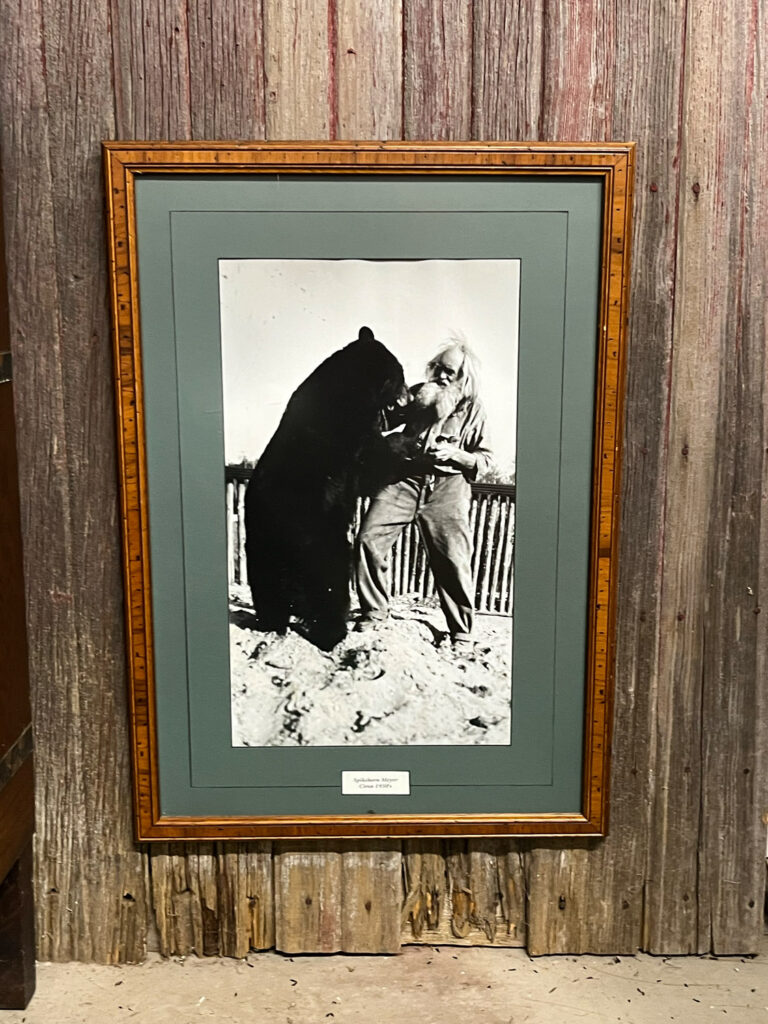
A mine inspector was watching John and his crew work when a boulder fell on the entrance of the mine and severed the water hoses going to the steam pump. Water began to fill in the mine, and John began to dig a tiny hole with the crew to escape. The mine was closed down after that.
After a bad breakup with his brother over some earnings from bushels of barley and beans from their shared land, John returned to Clare County with a bedroll and a backpack.
State trunk lines were becoming established throughout the state, and with them, future economic prosperity felt guaranteed. In 1927, federal designation for trunk lines M-14 from Ohio to Cheboygan became U.S. 27. Almost overnight, traffic became a new thing. It took a few long years of work with little funding to get the road going straight through Harrison. Its completion in 1931 was celebrated with a street dance and ox roast.
During this time, John purchased a heavily wooded lot to turn the green leaves into greenbacks. He made a deal with businessman and Oldsmobile founder R.E. Old’s himself to sell him the lumber. Over winter, he also developed the Harrison toboggan slide on Budd Lake, a 300-foot slide shooting toboggans out over the iced lake at upwards of 80 miles an hour.
Forever resourceful, the Swede handsaw technique John used on untouched swamp cedars for Christmas Trees turned into a profitable venture as well. He even sold one to the city of Detroit for its townhall Christmas tree. He personally delivered it, assisted by some folks from town, as he never drove.
John continued to buy land and lease the rights to gain the financial freedom he required to venture into his own ideas. From here, he bought the land between M-14 and U.S. 27, visible from both roads.
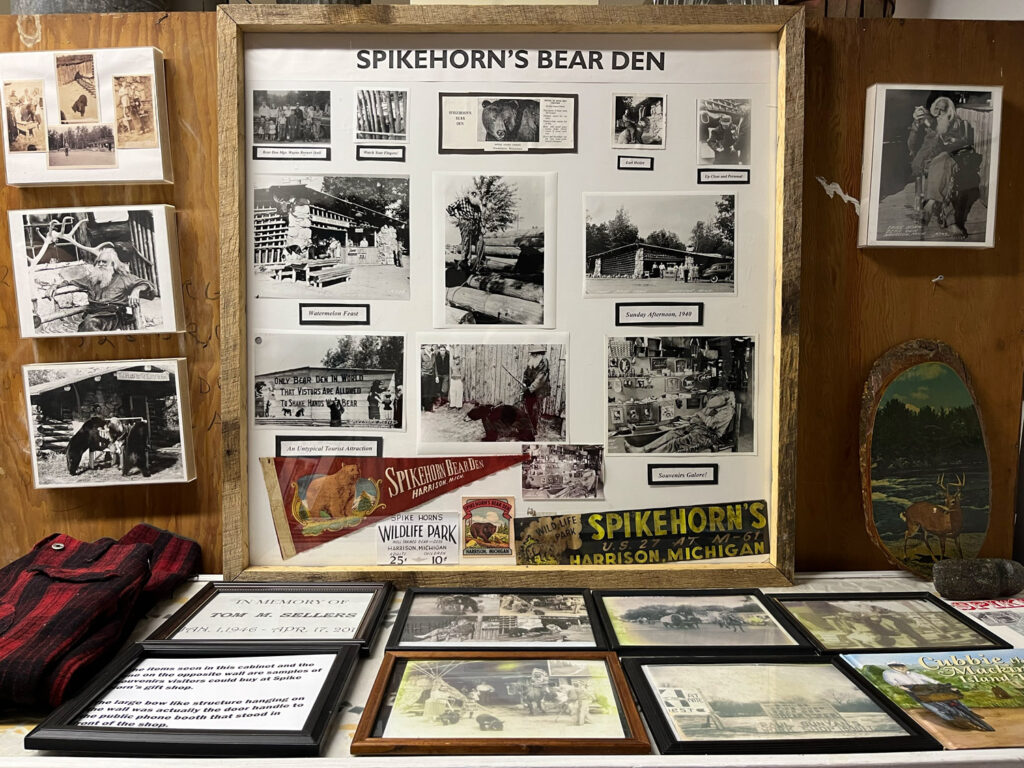
With that came the House by the Side of the Road, the beginning of the souvenir shop, and the name Spikehorn.
A piece in the paper advertised to the public Spikehorn’s handmade souvenirs, pudding stones, bird houses, and Indian artifacts for sale, with 2,000 acres fenced for wildlife to view.
When an elk boarded at Spikehorn’s didn’t want to go at the end of its stay, the publicity from the corralling showed the tourism potential of Spikehorn’s wildlife. The stubborn elk would stay put for good.
From there, Spikehorn really locked in on the vision. An advertisement for Spikehorn’s buffaloes, whitetail deer, and bears would reach readers statewide, with Spikehorn completing the package purposefully pictured in his handmade buckskins, moccasins, and long white beard.
He continued his marketing campaign by hitchhiking for publicity, traveling to towns, lodging with the bears himself, and staging events like bear rescues in a tree, often running to the nearest town newspaper to have them call for help.
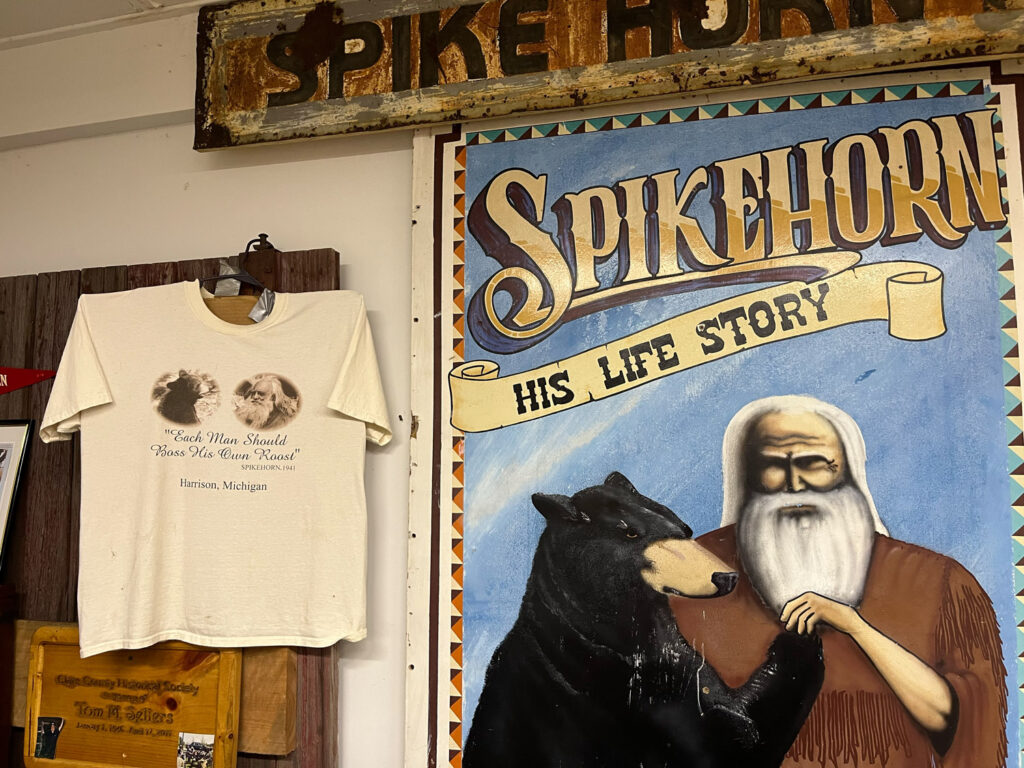
Spikehorn’s Bear Den and Wildlife Park was gaining buzz and had a lot of appeal with youngsters and families. His park became as notorious as the historic Doherty Hotel, putting Harrison on the map. Spike’s photo was on various editions of the Clare County road map.
Shaking hands with the bears was encouraged. Spike would let them eat candy or bread right out of his mouth. He was a Swedish Santa Claus gone full country.
Spikehorn’s talent was in the timeless tradition of oral storytelling. Born of a time when daylight meant hard work and nighttime was marked by candles and stories, Spike was a pure source of entertainment. Men, women, and children alike all flocked to hear his tales.
Chief Red Eagle was a real meal ticket for Spikehorn. The color of this performer wasn’t found in heritage but in personality. A black man dressed in gold earrings, feathered headdress, and braided hair entertained the crowds with stories that demanded attention.
It was a prosperous enough time that Spike left all of the souvenir store business to be handled by Red Eagle, his wife, and their children. He didn’t care to handle such matters anyways. Like all things for Spike, it worked just fine until it didn’t.
Taxes weren’t being paid, goods were missing. Red Eagle’s wife Starr had died, and Spikehorn wanted Red Eagle out. To Spike, money was only ever a problem when you didn’t have it.
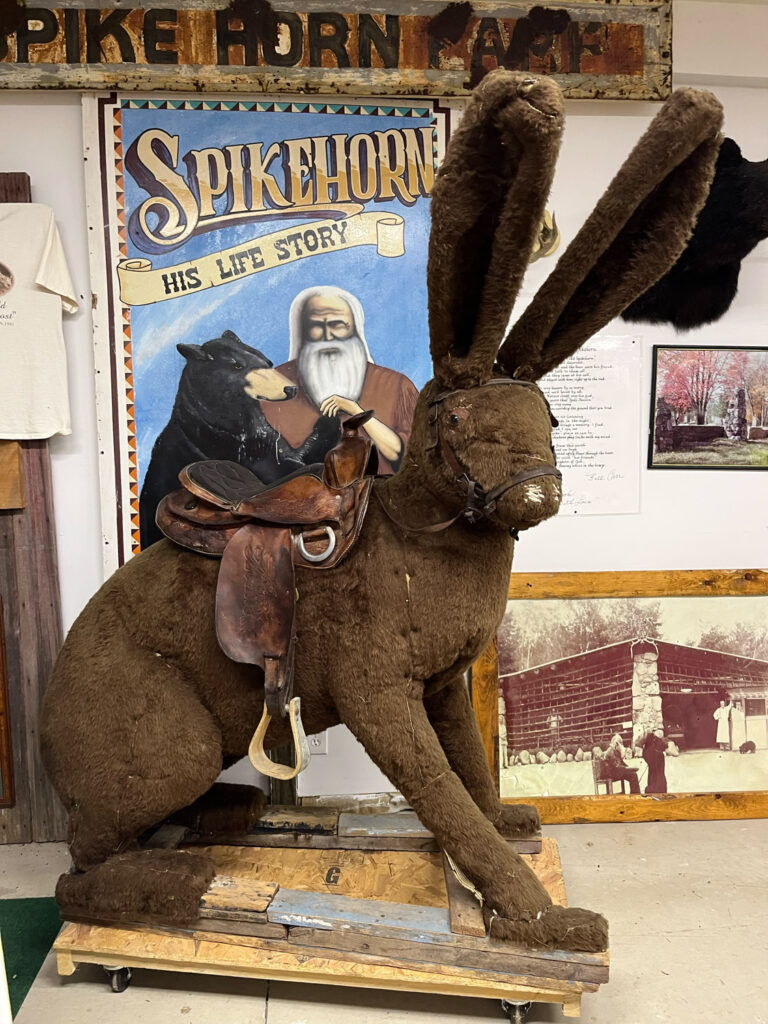
When Spikehorn didn’t have a female on staff or wife of a male employee to feed him, he made anything on the stove that he could dip in honey. Stale bread, stews, all were dipped in the golden elixir. Spikehorn loved honey, just like his bears.
The next best thing? Money.
Spikehorn loved to skip out on a bill. Enough so that a 36-year-old car repairman socked a then 71-year-old Spikehorn in the face in his garage. Sure, Spike had just put a bayonet in his face and threatened to unchain the bear he brought with him. The repairman paid what he considered a well spent $5 fine, and Spike found a new mechanic.
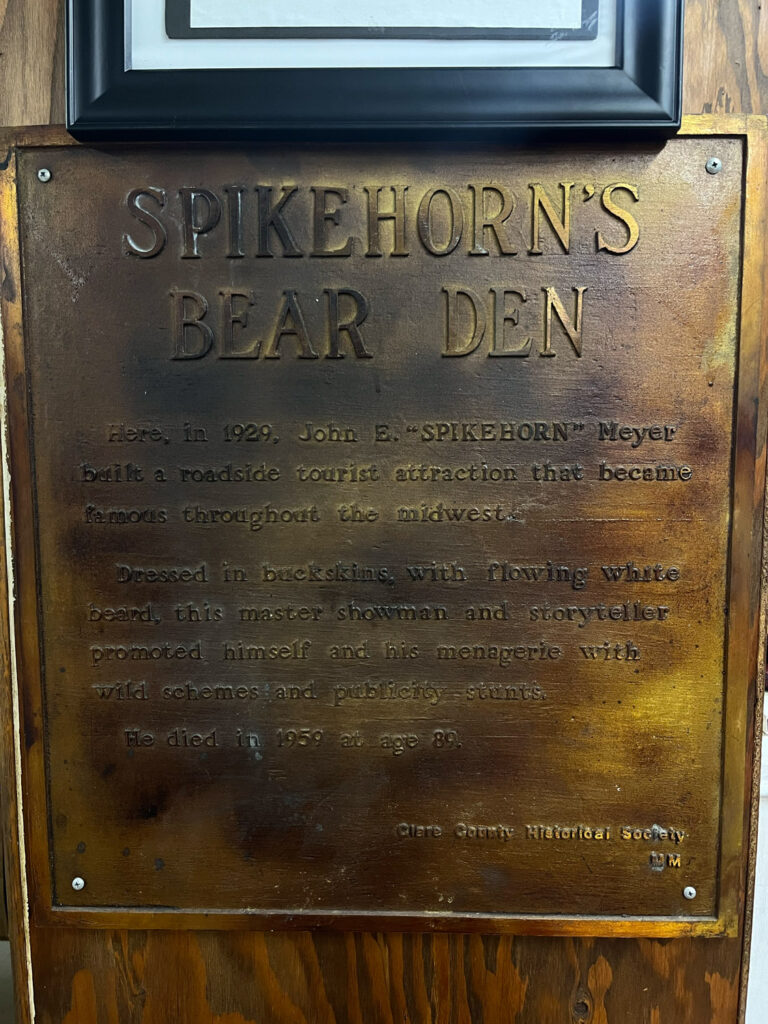
In another incident, one hardworking family, the Pfannes, had been working tirelessly for Spike, the only man around with extra work. When it came time for them to get their wages for cutting Christmas trees all season, Spike never coughed up. Christmas morning came and the tired parents of the Pfannes children had nothing to show besides their freshly cut Christmas tree.
Pfannes trailed down Spikehorn in town that day. As Spike was walking out of a store, Pfannes grabbed him by the beard, demanding his money. Spike, speechless, handed over a large roll of cash. Pfannes took his due, handed back the rest, and left.
Some run-ins over missing payments were even more violent.
A German-American woman, Matilda Miller, put on a bear show for tourists at Spikehorn’s Bear Den. After losing four dresses to bear claws, she asked Spike for a protecting apron. He gave her canvas duck. When it came time for her money at the end of the month—$70—he said he didn’t have it yet and to ask him next week.
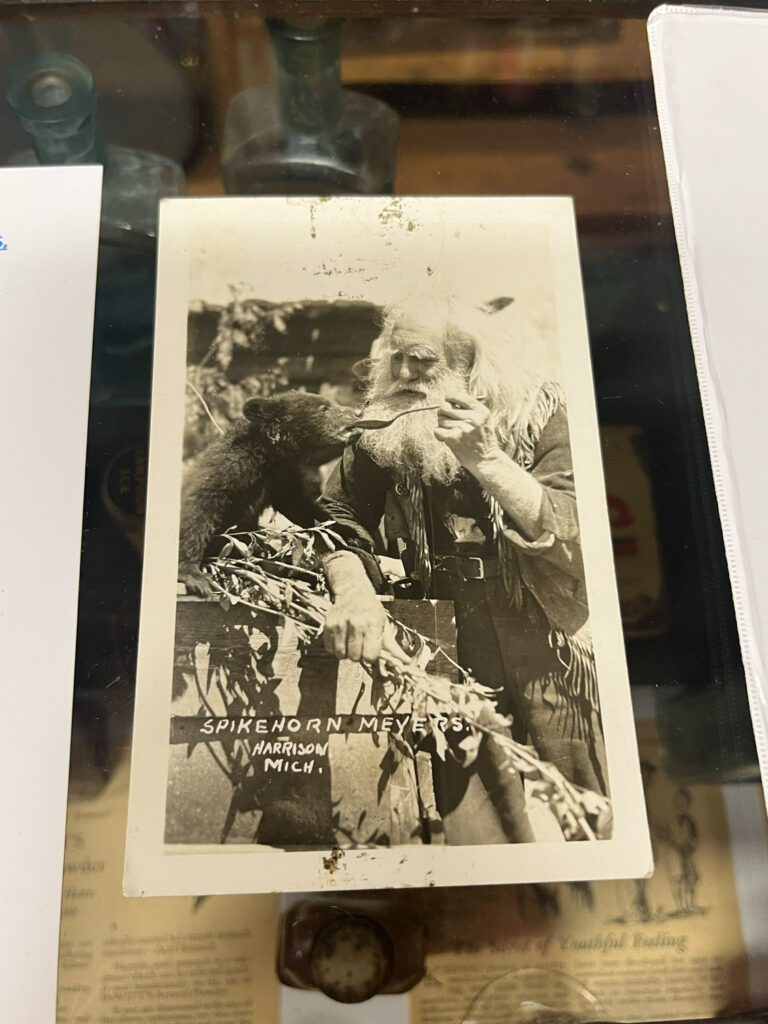
Next week became next month, and the work became more tedious. Matilda was making Spikehorn’s breakfast, two poached eggs, every day in the early morning. It was going on two months of unpaid work. That next morning, Matilda didn’t make any eggs.
Spike came out to the table.
“I want my money,” Matilda said.
“Where’s my eggs?” Spikehorn yelled.
She pulled off her apron, a gunny sack Spikehorn gave her now heavy with water and grease, and folded it.
“I want all of it and now!” she responded.
Spikehorn’s same matter-of-fact response set her off. She began to beat him upside the head back and forth with the apron.
Another female employee came to his aid and received the same business end of Matilda’s weapon of choice. Spike was knocked to the floor, and Matilda sat on his chest, grabbed his beard, and began slamming his head against the cement floor.
White hair and red blood covered the shop floor. When the dust settled, Matilda paid $10 in damages and then successfully sued Spike for her missing wages.
Domestic disputes were not the only problems at the wildlife park. The real bear traps placed for amusement could be the least of one’s worries.
A new Senate bill in 1937 required Spikehorn to pen his bears. But Spike would still find a way around it, putting entryway doors for anyone interested in entering the pens and interacting with the bears.
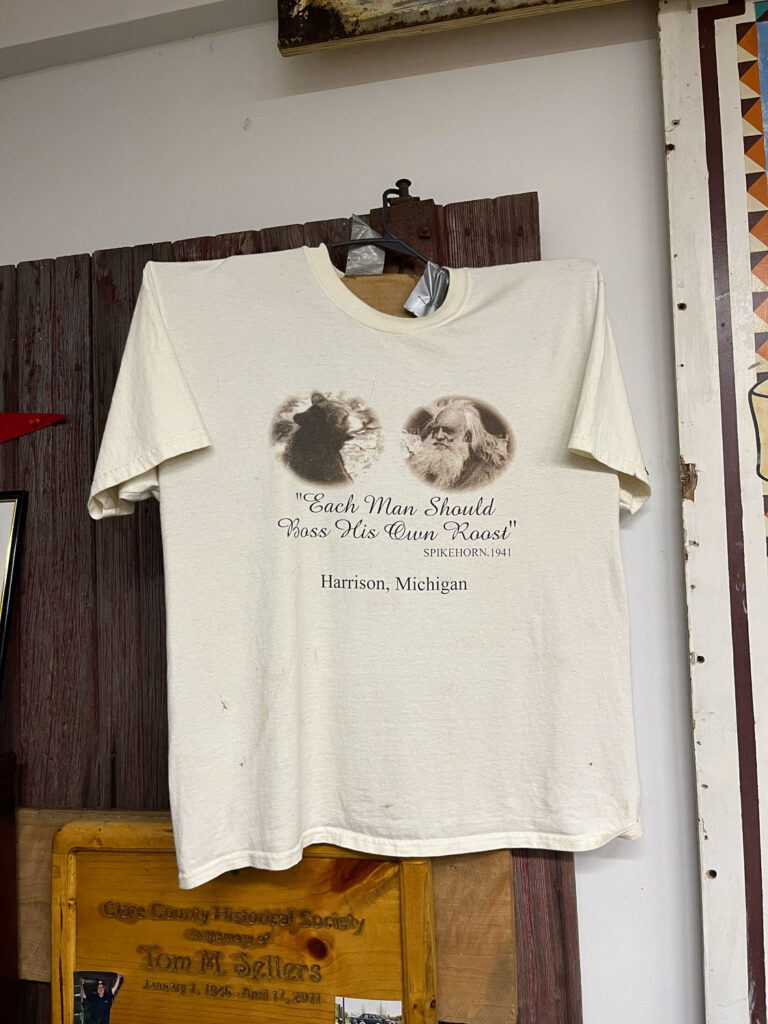
Multiple lawsuits followed bear mishaps at Spikehorn’s after this. A six-year-old in 1948 had turned her back on a bear to take a photo when the bear grabbed her with its paws and teeth, pulling her through a hole in the fence. It continued its attack until they could pull her out.
A similar attack happened to a mother of three children as she walked along the fence of the bear pen.
In a group of scouts, a boy offered a piggyback ride to a cub. When he was done with the ride, he tried to nudge the small bear off, who instead gripped tighter. Finally after he used his elbow, the bear released, and the boy’s back was lacerated.
The scouts practiced first aid as they handled the boy’s wounds, while Spike said he “probably shouldn’t have used that elbow.”
Given the list of permits required that Spike was not attaining, Spike was arrested. Upon his release, he added two signs to his park: “Feed the Game Warden to the Bears” and “Help Feed the Little Bears the Game Wardens Kill.”
Master of publicity, any down periods would be remedied by a bear escape ending inevitably with local law enforcement or Spike himself publicly lassoing the bears back into their corral after running into the local newspapers office for help. Over time, Spike got more intricate and outrageous with his publicity schemes.
News stations quaked when he would bring five full-grown bears into elevators at the studio after promising one or two cubs.
Spike would broadcast his life in Harrison coast to coast from Detroit’s Masonic Temple, drawing listeners who wrote in asking for more stories.
He took his politics seriously, though maybe not his campaigning. He haphazardly ran for state representative in 1944, 1946, and 1948 on a platform to abolish property taxes. Despite his nine legal cases from 1910 to 1948, he still had fire—his own oddball fire.
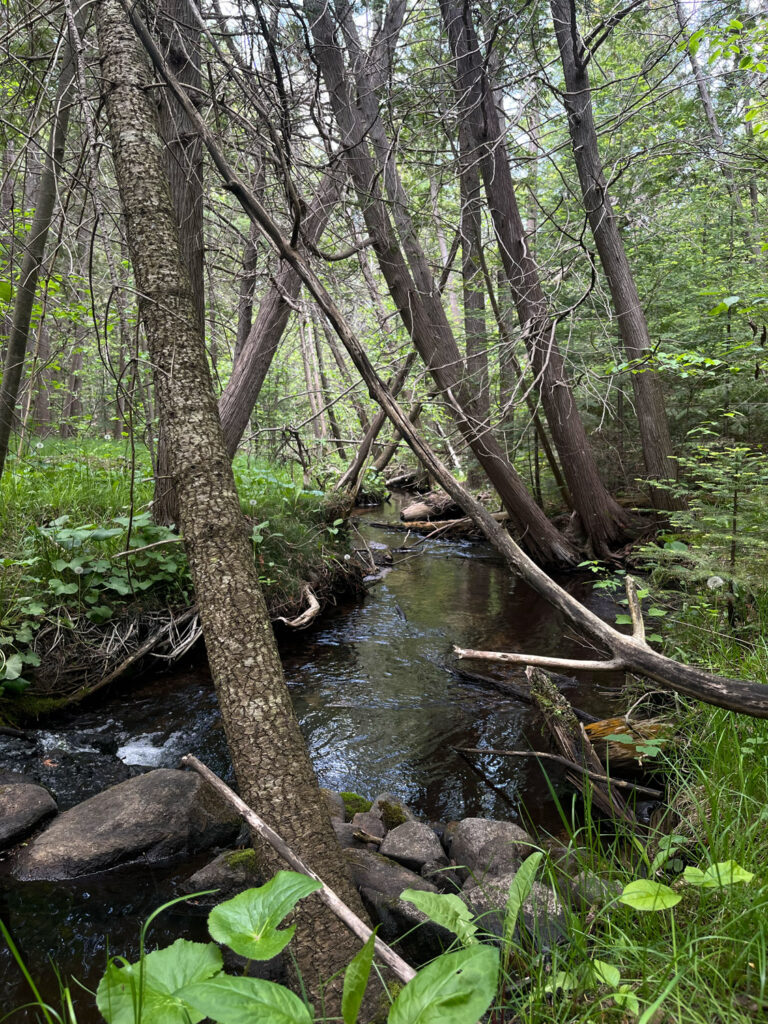
That fire didn’t want to die, and in a sense, it became too much to handle. One morning, a literal fire got out of Spikehorn’s wood stove and flew through the home courtesy of his “free” insulation (cardboard). After a subsequent stroke, Spikehorn slowed down for once.
With plans in place for his park to continue after he was gone, Spike was put in a nursing home. Though now slower and softer, Spike maintained a strong desire to return home and stay there. He would soon peacefully receive that gift of rest in 1959.
While Spike wanted his park to operate without him, it could not. Without the heart of the park, there was nothing to beat life into it, and it quickly faded into memory.
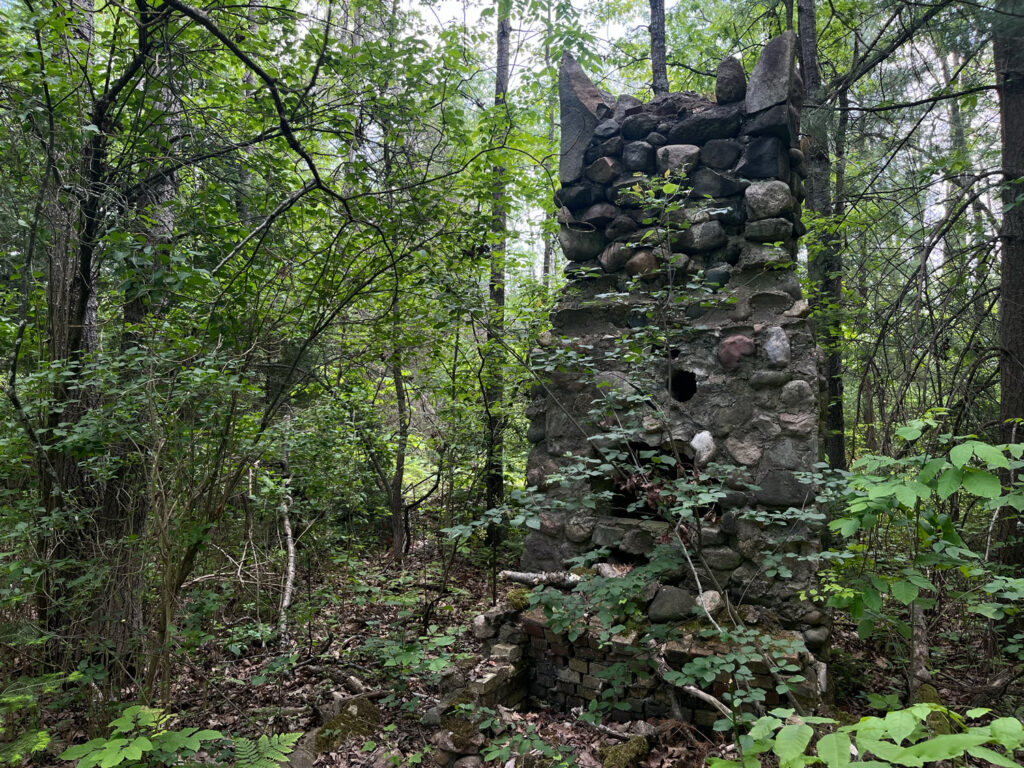
Guided by Clare County historian and retired judge Jon H. Ringelberg, I recently followed the old trunk lines of the original road to Harrison. According to his colleagues at the Clare County History Park, Ringelberg could throw a dart on a map of Clare County and have a story to match it, though he said he’d just make up one if he didn’t.
We came upon the fresh stream that Spikehorn once preferred over modern amenities. I touched the silt and stone that he had sourced from the stream to construct the tall chimney, still standing today. I thought about the many relics throughout the landscape barely visible on my drive up and the quickly fading stories behind their construction.
Each a stone of their own in the building of our history.
Spike made his home a home for both man and beast—at least until he was out of money. Sure there was a scratch or two, but the stories—and his legacy—would last a lifetime. Even beyond it.
Devinn Dakohta is a contributing writer for Michigan Enjoyer. Follow her on Instagram @Devinn.Dakohta and X @DevinnDakohta.


